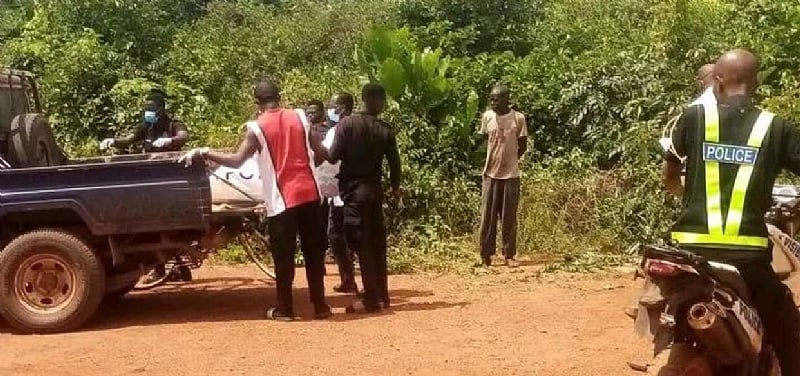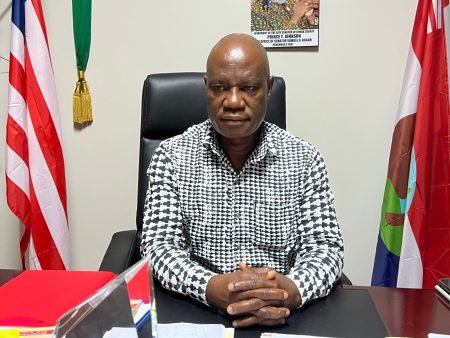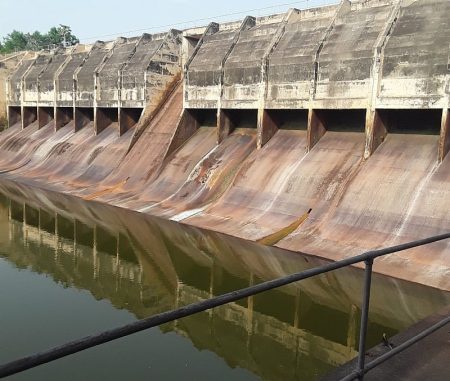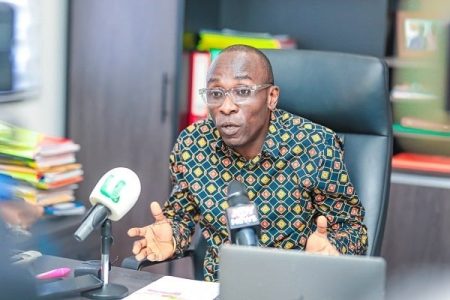Discovery and Initial Investigation
In the quiet predawn hours of a Tuesday, a chilling discovery disrupted the tranquility of the Berekum-Sampa road in the Bono Region of Ghana. The lifeless body of a young man lay along the desolate stretch, specifically near the Ponkor portions of the road. Alerted by an informant, police officers from Sampa in the Jaman North District swiftly responded to the scene, initiating an immediate investigation. The gravity of the situation was apparent, and the body was promptly transported to a local morgue for preservation and subsequent autopsy. This crucial step would allow medical examiners to determine the cause and manner of death, providing vital clues to unravel the mystery surrounding this tragic incident.
Concurrent with the transportation of the body, law enforcement officers made significant progress in their investigation. Two individuals were apprehended and taken into custody as suspects in connection with the young man’s death. While details surrounding the apprehension and the suspects’ identities remained undisclosed at this early stage, their detention signaled a potential breakthrough in the case. The police source indicated that the suspects were cooperating with the ongoing investigation, offering a glimmer of hope in uncovering the truth behind this unsettling event.
Preliminary Findings and Community Engagement
As investigators meticulously pieced together the fragments of information, their initial assessments pointed towards the possibility of foul play. While the exact nature of the suspected foul play remained undisclosed to protect the integrity of the investigation, this revelation heightened the sense of urgency and gravity surrounding the case. The police appealed to the public for assistance, urging anyone with information related to the incident to come forward. This collaborative approach between law enforcement and the community underscored the importance of collective vigilance in ensuring justice and safeguarding public safety.
The unexpected discovery of the young man’s body sent shockwaves through the community, leaving residents grappling with uncertainty and fear. Recognizing the emotional impact of such an event, the police sought to reassure the public, emphasizing their commitment to a thorough and transparent investigation. They urged residents to remain calm and patient as the investigative process unfolded, highlighting the importance of avoiding speculation and allowing the facts to emerge through proper channels. By fostering open communication and trust, the police aimed to quell anxieties and foster a sense of shared responsibility in bringing those responsible to justice.
Delving Deeper into the Investigative Process
Beyond the immediate steps taken in the aftermath of the body’s discovery, the investigation promised to delve deeper into the circumstances surrounding the young man’s death. Forensic experts would meticulously examine the collected evidence, including the autopsy report, to establish the precise cause and time of death. This scientific analysis would play a crucial role in reconstructing the sequence of events leading to the tragedy and identifying potential contributing factors.
Furthermore, investigators would broaden their scope to explore the young man’s background, including his relationships, recent activities, and any potential threats or conflicts he may have faced. This comprehensive approach would help paint a clearer picture of his life before the tragic incident, potentially uncovering motives or connections that could shed light on the circumstances of his death. By piecing together these disparate pieces of information, investigators hoped to create a cohesive narrative that would ultimately lead to the truth and bring closure to the grieving family and the community.
The Path Towards Justice and Closure
As the investigation progressed, the focus would shift towards building a strong case against the suspects. Investigators would meticulously gather and analyze evidence, including witness testimonies, forensic findings, and any other relevant information, to establish a solid foundation for prosecution. Maintaining the integrity of the evidence chain would be paramount to ensuring its admissibility in court and safeguarding the fairness of the legal proceedings.
The judicial process, with its emphasis on due process and the presumption of innocence, would play a vital role in determining the suspects’ guilt or innocence. The legal system provided a framework for ensuring a fair trial, protecting the rights of both the accused and the victim. While the wheels of justice often turned slowly, this deliberate process aimed to deliver a just outcome based on the weight of evidence and the application of the law. The pursuit of justice, while challenging, remained a cornerstone of a functioning society, providing solace to the aggrieved and upholding the principles of fairness and accountability. The outcome of this investigation and subsequent legal proceedings would not only serve as a testament to the resilience of the justice system but also offer a sense of closure to those affected by this tragic loss.














